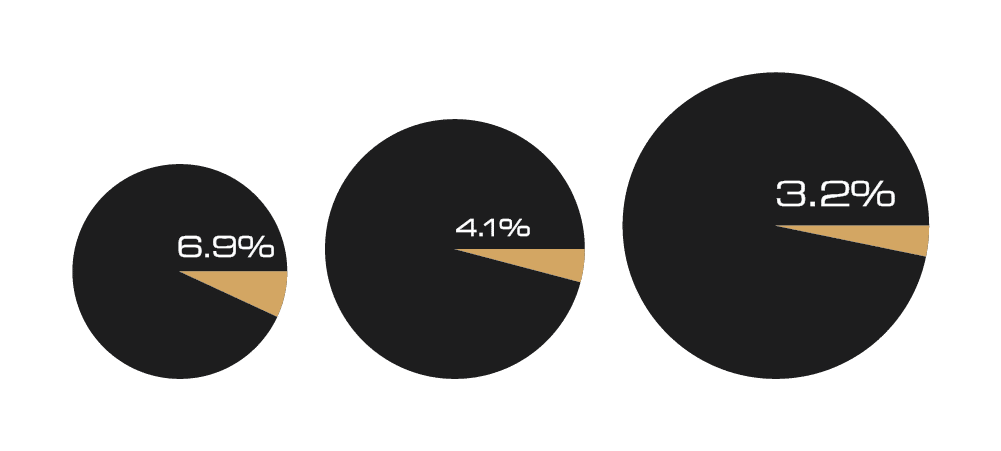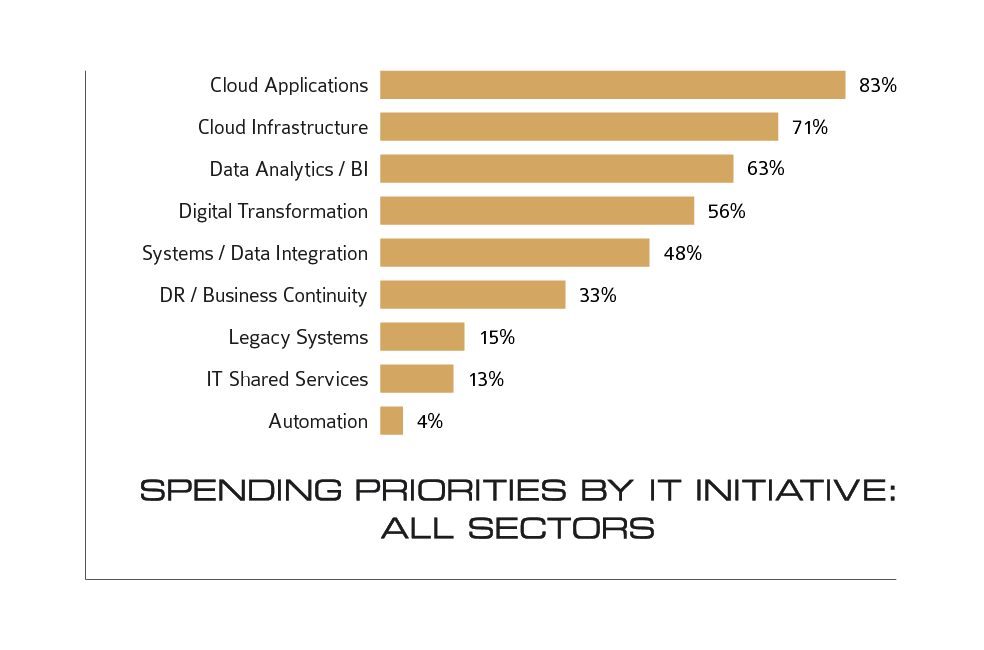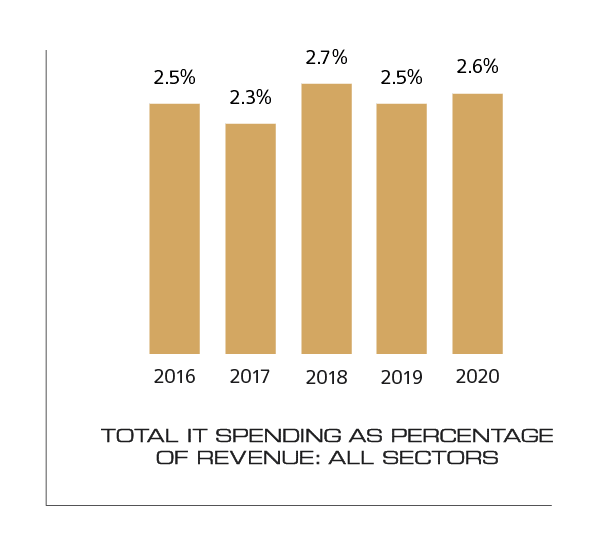Today’s businesses are under pressure to operate on razor-thin margins. That means every area of your budget needs to pull its weight to make your business succeed.
When tightening their belts, organizations may be tempted to cut IT budgets. But without knowing how much you should spend on IT in the first place, negotiating IT spending becomes a guessing game that leaves your business’s security and growth potential on the line.
By underfunding your IT department, you may actually be weakening your ability to grow in the future. Understanding the standards for IT spending in your industry, the ROI your technology gives, and an effective IT strategy to plan for your technology spending can both help your business in the long term and help you convince decision makers of the necessity of your IT budget.
Before evaluating your IT budget, you should understand how technology impacts your competitiveness, operational efficiency, and risk aversion, and the ROI you receive from your IT spending. Here’s the breakdown of how much Texas businesses should be spending on technology.
How Much Should I Spend on Technology?
It’s no surprise that the amount of money you spend on technology depends on the specifics of your business. Your organization’s size, industry, location, assets, and more all factor into what your optimal IT spend should be.
However, there are a few general statistics on IT spending found in studies of businesses throughout the US and Canada that provide a useful baseline:
- According to a study from Deloitte, in 2024, businesses spent an average of 5.85% of their total revenue on their technology budget. However, keep in mind that that number varies GREATLY from industry to industry and that respondents in this study only included organizations with over $50 million in annual revenue or IT spending over $1 million.
- Overall IT spending increased by 6.8% in 2024. Although total spending increased, the percentage of overall revenue spent stayed roughly the same as previous years, indicating that businesses grew in revenue and matched that growth in proportional IT spend.
- Smaller businesses tend to spend more on IT. The average small business spends 6.9% of their total revenue on IT to keep up with the advancements of larger competitors.

What can these numbers tell us?
- To understand the amount you should be spending on technology, you’ll need to consider the standards in your specific industry and for businesses of your size. You should also consider your IT spending in terms of investing a percentage of your total revenue rather than merely trying to limit it to the lowest possible amount.
- Small businesses will have to spend more of their total revenue on technology to achieve the same results as larger businesses.
- IT spending is increasing. If your spending is staying the same or you’re relying on legacy systems to maintain your business, you aren’t growing as much as your competitors are, and you’ll likely find yourself outpaced in the future.
What if I’m spending more than the average?
If you’re spending more than the average for your industry, it’s a good idea to evaluate your budget with a professional. Is your current IT setup accomplishing all it needs to? Are you getting greater advantages due to your extra IT spending, or are you paying more for less?

If you have the budget room, you could allocate some of that spending to areas that will provide the greatest advantages; for example, cloud applications and infrastructure, data analytics/BI, and digital transformation are the top areas businesses focused on last year due to their ability to expand capabilities while maintaining low operational costs.
However, if you’re merely paying more because your technology is overpriced, then you may want to look at your options for switching service providers or strategies.
What if I’m spending less than the average?
If you find that you’re spending less on IT than the average company, it could be because you just got a really lucky deal; but more likely, you’re opening yourself up to risks because of gaps in your security, and your business won’t be as competitive as it could be with the right IT resources, especially in the long run.
Ultimately, you’re not winning by spending less than you should be on tech—you’re losing out on long-term savings and operational advantages that improve your business.
How Much Should My Business Spend on IT Services?

IT services make up just one part of your total technology budget. How much you “should” spend on them depends not only on your total budget, but also on the size of your company, its needs, and the cost of IT support in your area.
How Much Should IT Services Cost?
Leading experts place the price of managed IT services at between $100-150 per person per month. However, advanced solutions and consulting can raise that number to as high as $250 per user. Depending on the number of employees in your company, you’ll likely need to plan to spend several thousand dollars a month on IT services.
If your business requires specialized IT services, such as industry-specific compliance services or niche software maintenance, those services may require additional costs.
Although the price may seem high, the many advantages of managed IT services vastly outweigh the risks and costs of finding yourself unprepared or under-equipped when it comes to your technology and security.
The ROI of Your Tech Investment
When you invest in technology, you’ll see a return on that investment through improvements such as increased productivity, better efficiency, and decreased downtime.
Think of your technology budget as an investment rather than an expense. Unlike your electricity bill, where getting a cheaper price means getting the same services but with a better deal, the amount you spend on technology does affect the quality and amount of services received.
Look at Technology as an Investment, Not Just an Expense
For most businesses, the highest operational cost will always be labor. In professional businesses, employee wages, benefits, and other costs make up as much as 70% of the business’s total budget.
However, if technology is implemented in a way that allows you to create savings by making labor more efficient, you’ll see a significant return. If your company is growing, that may mean you don’t have to hire new staff as quickly because of the increased efficiency in your processes.
The ROI of Reduced Risk
Gartner has calculated that for each minute of network downtime, the average business loses $5,600. That amounts to losses of over $300,000 per hour. However, even taking the lower costs and revenue of small businesses into account, the losses average out to $140K per hour.
Considering the potential costs of downtime, let alone those of a data breach, ransomware attack, or any other IT or security problem that delays work, the return on investment for reduced risk alone is invaluable.
How to Get the Most Out of Your IT Budget
To really make the most of your IT budget, you should first know how much you should be spending. Create a plan strategizing the areas of most value and the amount that should be spent on each area.
It’s a good idea to invest in technologies such as automation, cloud computing, and SaaS that provide great capabilities and proven ROI. Cloud applications especially are currently a top strategic priority for very small businesses looking to grow. An IT professional with experience in your industry can help you determine the best strategy for your technology budget.
Optimize Your IT Spend with Tolar Systems
The best thing you can do to optimize your IT spending is work with an IT professional who can strategize with you for your specific business needs.
Tolar Systems has extensive experience with consulting, assisting, and serving organizations across industries to help them use technology to grow their businesses. We combine tech with business strategy to help you find the right solutions that will bring your business maximum benefits.
Give us a call today at 325-208-3927 or get in touch here to speak with a qualified technician and learn how you can get the most from your technology!